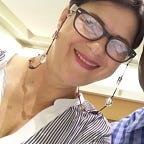Breaking free from hunger in Mozambique
Fighting against hunger, a liberation war
Alberto Mabunda, community leader of Pandzani, has gathered his people under a shady tree. It is almost 40 degrees in Guija, Gaza Province, a two-hour drive out of Chokwe main city. The terrain is rough and skinny cows litter the landscape, in desperate search of grass and water.
The 47 women and three men we meet seem eager to share their experience. They built a cattle treatment station and a field for multiplication of drought- resistant seeds, as part of a project ran by the World Food Programme (WFP) with funding from the German Ministry for Economic Cooperation and Development.
“During the year of El Niño, we had no food. Our cattle were sick. The disease spread quickly because we had no way to contain it,” says Alberto. “We sold the meat at a very low price to buy food.”
After El Niño, the community tried to find solutions. They all agreed they needed to build a structure to protect their cattle whilst they are vaccinated and sprayed against disease. Traditionally a community of cattle farmers, they decided to create a field to grow food in spite of the harshest drought conditions.
The community started building their assets mid 2018. WFP’s partner on the ground, Associaçao Rural Africana (ARA), guided the community through the process while WFP provided food baskets of maize meal and beans to participants.
“We prepared a quarter hectare and planted cassava. ARA gave us seeds and the crop grows even under the hot sun, unlike maize. We will harvest in February, feed our families and sell the excess to neighboring communities. Seeds from the harvest will also be planted in family gardens,” says Alberto. “We are now agricultural farmers too, even though there has been no rain.”
The cattle treatment station took six weeks to build. Here, a no-nonsense woman named Rozalea Chivodze is in charge of spraying the cattle for external parasites before they are vaccinated against disease with liquid treatments supplied by the local authority.
“I helped build the station and learnt how to spray cattle because keeping them safe and healthy means my children have a future. In time, we will fetch a good price at the market,” Rozalea says confidently. “I am one of 47 women who worked alongside three men creating the cassava field and building the treatment station. The surrounding communities have seen this happen. It encouraged other women to work outside of their home.”
“The food we received from WFP was enough to feed the participants and their families. We are grateful. However, our wish is that we do not have to rely on WFP for food in the future,” says Alberto. “We have called ourselves the September 25 Project — after the date the Mozambican independence war began — because fighting against hunger is our liberation war.”
In Mozambique, WFP has been increasingly shifting its approach from direct implementation to supporting the government in assuming and delivering Zero Hunger programmes.
“Thanks to German funding, WFP is playing an important role in rural Mozambique by delivering food and at the same time creating incentives for the communities to become more sustainable,” says Martinho Manhique from ARA.
In the province of Gaza, WFP reaches some 7,500 people affected by climate shocks with food assistance. Resilience activities, such as the seed multiplication and cattle treatment project in the Pandzani Community enable the most vulnerable people to meet their seasonal food needs by building or rehabilitating productive assets that reduce the risk of disasters, strengthen livelihoods and build resilience by increasing smallholder farmers’ productivity.
WFP worked on this project with the local government and received funding from The German Ministry for Economic Cooperation and Development (BMZ) — channelled through the German Development Bank (KfW).
Read more about WFP’s work in Mozambique here
Read more about WFP’s Food Assistance for Assets here
